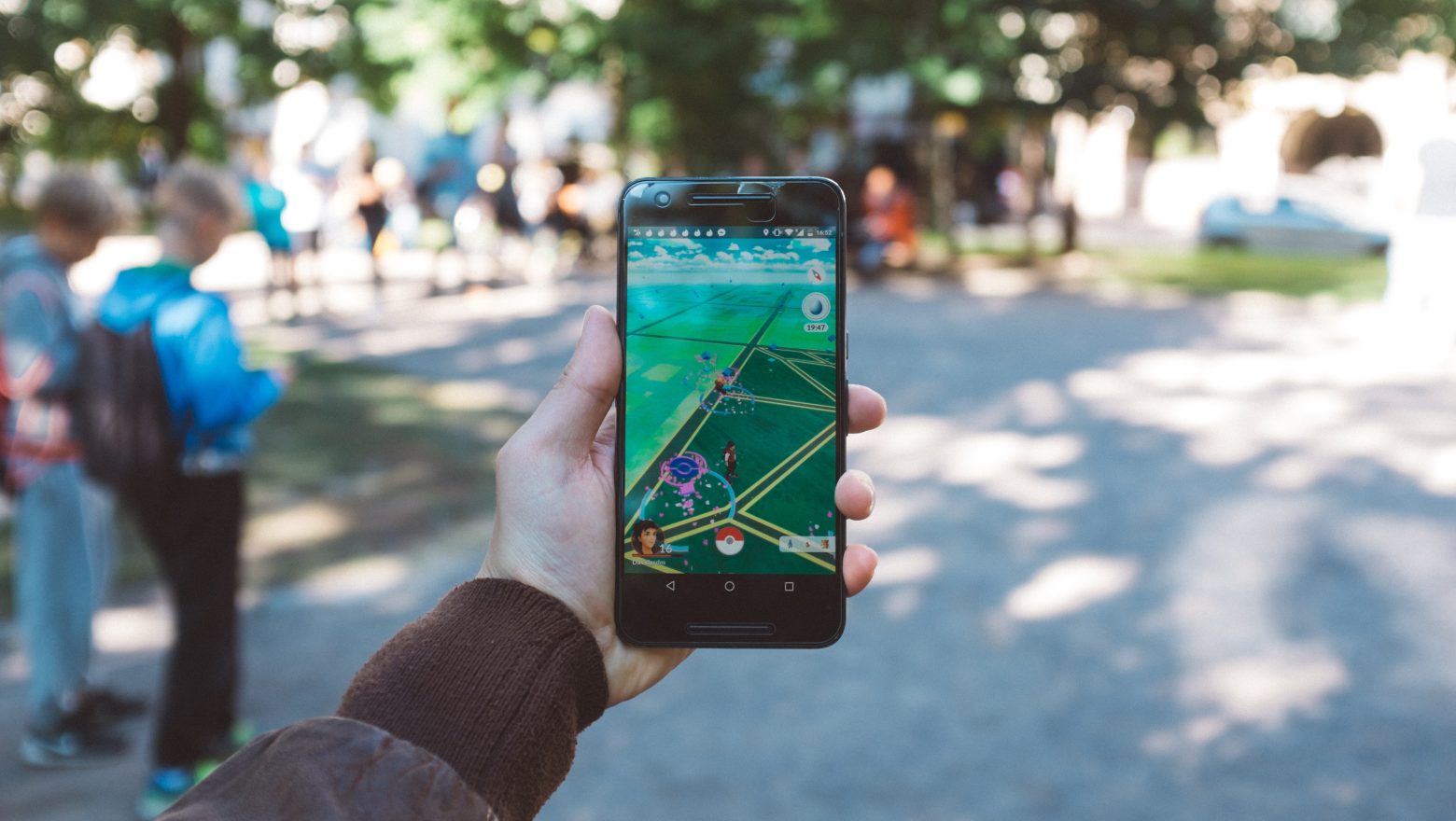Recently we came across an interesting research on streaks in apps: regular streaks don’t work because users inevitably break them.
This research discusses the impact of streaks—unbroken series of three or more consecutive behaviors—highlighted through tracking technology on user behavior: how maintaining a logged streak becomes a goal in itself, affecting subsequent decisions.
So, what key findings we looked for:
1. Consumers often use apps that highlight streaks, with gaming, social media, health and fitness, and language-learning apps being prominent.
2. Participants reported going out of their way to maintain streaks, even engaging in offline activities.
3. The pilot study showed that consumers like and value streak notifications, finding them motivational and enhancing their app experiences.
4. The main hypothesis suggests that consumers are more likely to engage in a behavior when it contributes to an intact streak in their behavioral log.
5. The research introduces the concept that maintaining a logged streak becomes a goal in itself, influencing subsequent decisions.
6. Ancillary predictions include the amplification of effects when consumers attribute streak breaks to themselves and the attenuation of effects when consumers can repair broken streaks.
These findings highlight the psychological impact of streaks displayed through tracking technology on consumer behavior, shedding light on how individuals value and strive to maintain behavioral consistency.

Source: Jackie Silverman
Now, take a look at the main example in the study, which was organized in collaboration with a university’s wellness program.
They organized a 30-day fitness challenge, encouraging participants to walk at least 7,000 steps a day. The participants used a step-tracking app that displayed their step count in real time and highlighted streaks of meeting the daily challenge.
The result of this study was that users with intact streaks were more likely to engage in the target behavior (meeting the challenge) compared to those with broken streaks.
So regular streaks don’t work because users inevitably break them. The reasons can be both external and internal factors.
The motivation to continue logging in an app with a broken streak is less than in an app without a streak at all (as shown in the graph).
What’s the solution? In our article, we will discuss how to ensure that streaks in digital health applications do not break, and we all maintain a high Retention rate.
And if you want to delve deeper into the topic of increasing retention and engagement in digital health apps, read our book on how to:
1. Make product strategy to drive retention and engagement
2. Use best CX (UI/UX) practices to make an app not just used but loved
3. Construct best Engineering practices to build scalable solutions
4. Count compliance with healthcare regulations
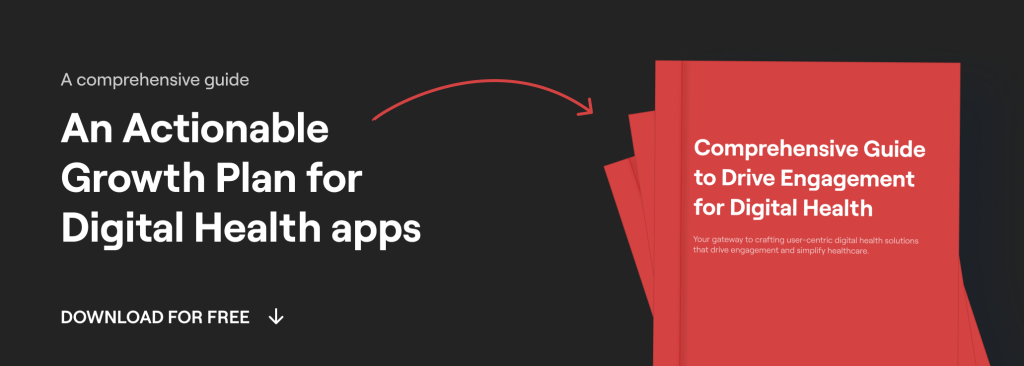
Download Free Actionable Insights to Grow your Digital Health app
1. Flexible goal setting
Allow users to adjust their goals or streak requirements to accommodate changes in their routine or unexpected interruptions. This could include setting a minimum number of active days per week instead of requiring daily activity.
For example, in Sumu app we give possibility to create personal goals:
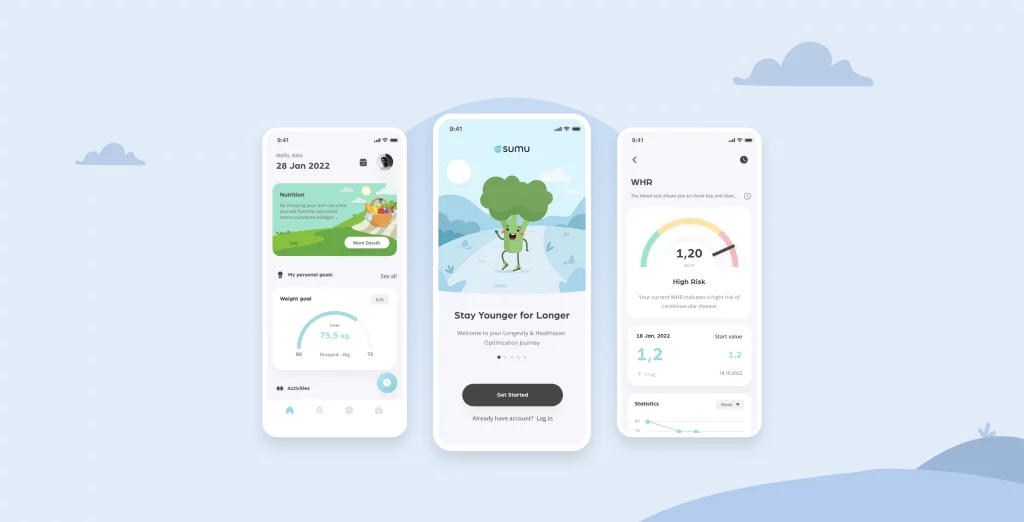
Learn how we’ve built longevity app focused on DNA tests
2. Just Freeze
Well, Duolingo has an excellent example of a streak that you CAN freeze. If you happen to skip a day, meaning you don’t log in and complete any lessons, your streak won’t reset to zero. The streak freeze serves as a safety net, providing an additional layer of protection to safeguard your streak.
How it can work in digital health:
1. Streak notification: as you approach the end of the day without meeting your step goal, the app sends you a friendly reminder about your exercise streak and the option to freeze it.
2. Streak freeze option: the notification includes a button that allows you to “Freeze Streak.” Tapping this button communicates your intention to the app.
3. Usage conditions: the streak freeze feature comes with reasonable conditions. For example, you can only use it once a week or after maintaining your streak for a minimum number of days.
4. Activated streak freeze: if you choose to freeze your streak, the app acknowledges this decision and preserves your streak for that day. Your streak remains intact despite not meeting the daily goal.
5. Thawing the freeze: to maintain the integrity of the streak, the app prompts you to resume your regular step goals the next day. If you successfully meet the goal, your streak continues as if it was never frozen.
6. Positive reinforcement: upon freezing and subsequently resuming your streak, the app provides positive reinforcement, recognizing your commitment and flexibility. This positive reinforcement serves to motivate users and reinforces a sense of accomplishment.
3. Offer extra action
Moreover, it’s not the only thought that comes to mind: you can simply offer the user something extra to do in the app to restore the streak.
We have a good friend, Michael, who consistently kept up with his workouts for a very long time, thanks to Habitica, where he checked off his daily tasks.
But then, he got overwhelmed with a lot of urgent matters, and due to stress, he missed an entire week of workouts. However, he couldn’t resume his exercises in the same perfect schedule.
So, he came up with a “positive punishment” for himself: in addition to his current workouts, he decided to do as many sessions as he had missed previously.
Generic example: a fitness app “WellnessAchiever” that encourages users to complete a certain number of daily steps to maintain an active lifestyle.
The app features a streak system, rewarding users for consecutive days of achieving their step goals. If a user misses a day and breaks their streak, the app could offer them a bonus challenge or a special workout routine to regain momentum.
By the way, if you want to learn not only about Retention mechanics but also other aspects of digital health product development, check out our list of 100 resources for digital health startups and companies. It includes books, guides, websites, and influencers covering Product Management, UX, Technology, Healthcare market trends, and Product Marketing.
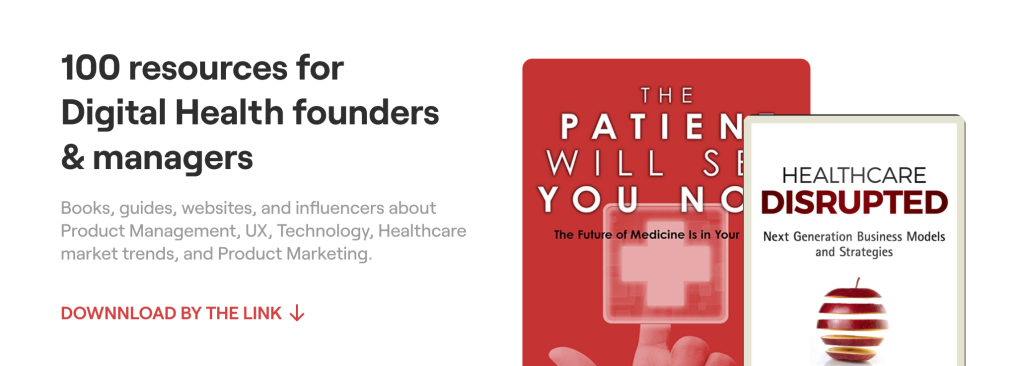
Download List of 100 resources for digital health startup founders & managers
4. Motivational reminders
Send personalized notifications or reminders highlighting the benefits of continuing their health journey and the progress they’ve made so far.
For example, we make such reminders in ProgressMe app:
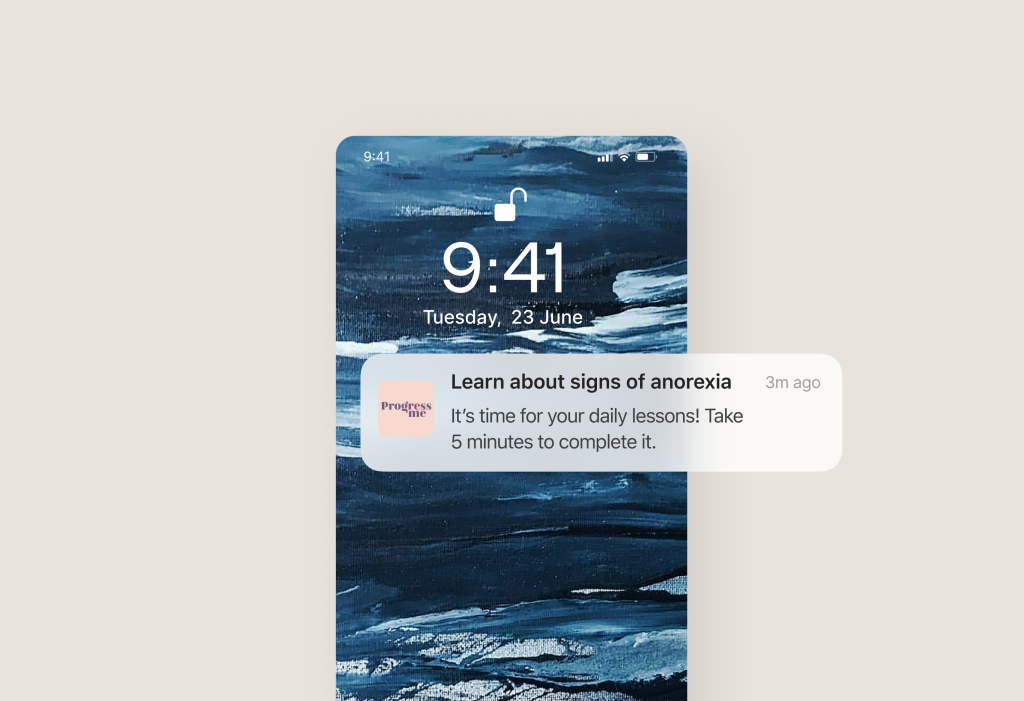
Learn how we’ve built gamified platform for eating disorder treatment
In the image above, the app reminds the user about the daily lesson because they forgot that they needed to complete it today.
5. Reward system
Implement a reward system where users can earn points or badges for getting back on track after missing a few days. These rewards can be redeemable for in-app benefits or discounts.
Let’s take a closer look at the reward system in the image below:
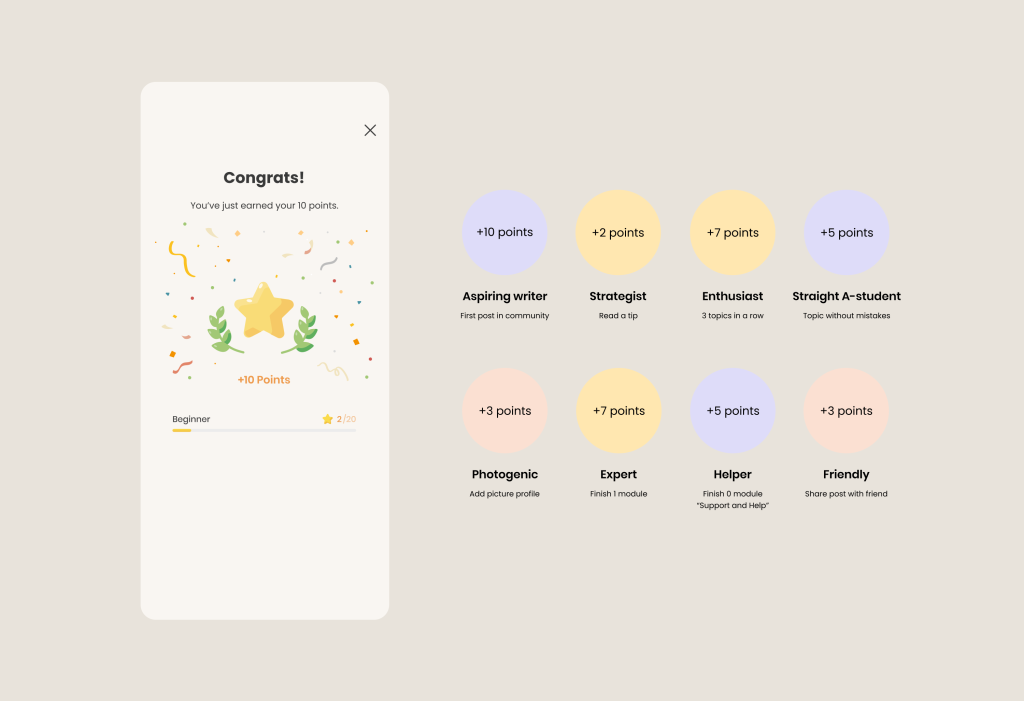
Here we have added a complex system that rewards the user for increasing their own progress. You may have heard that computer game lovers very often replay games just to get an “achievement”.
And the trick here is that in order to increase this very progress and get an “achievement”, you need to go into the product more often. Therefore, we repeat once again that this is a Must Have for increasing the Retention rate and related indicators that affect revenue (LTV, ARPPU, etc.)
How does it work, in more detail? What ways can such gamification be used in the healthcare industry?
The application provides the user with certain information, a task, a questionnaire, etc. However, in order for the user to spend his time on your application, they need to be encouraged.
Yes, if you provide the user with quality information, this in itself encourages them to use your product. But nowadays, users have become more choosy and our task is to give them new emotions and stand out from other competitors.
Having received the necessary information from the user, we thank the user for the time spent and choosing our product.
And HOW we thank them is most important: we load them with a number of awards, which are backed up by attractive animations/images. Thanks to this, the user receives a microdose of endorphins in the body and the realization that we value their time.
6. Social support
Incorporate social features where users can share their progress and challenges with friends or a community. Peer support can be a powerful motivator.
For example, in Microshift app we create possibility to share user results with other people after meditation:
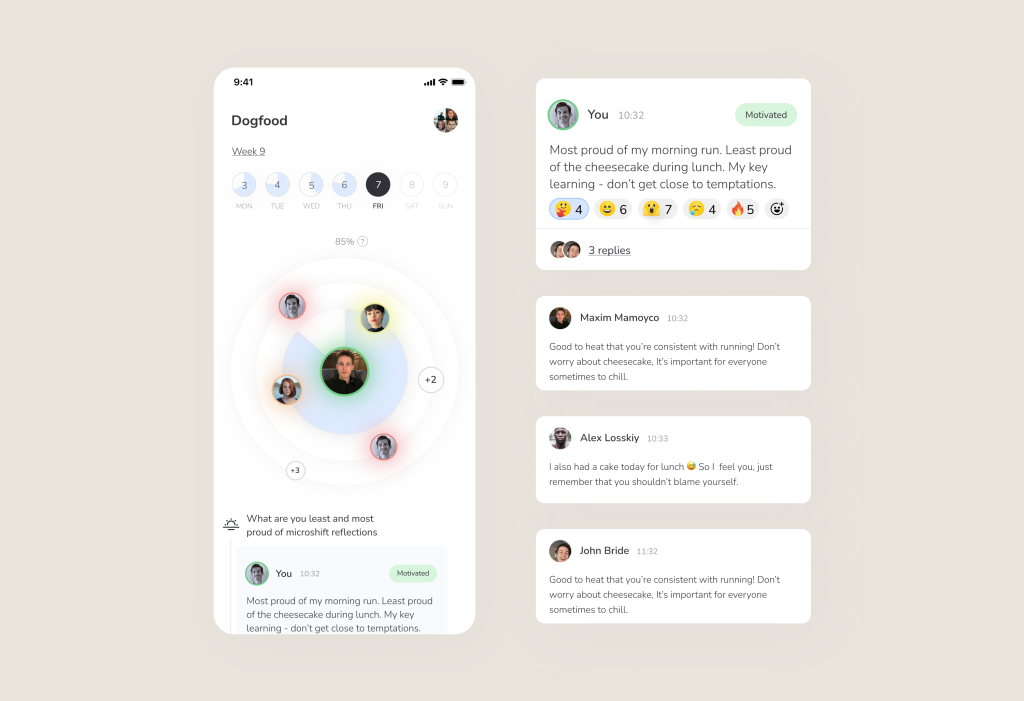
Learn how we’ve built mental health platform for Swedish startup
Moreover, provide motivational quotes or messages from health experts or community leaders within the app, especially after a streak has been broken, to inspire users to restart their journey.
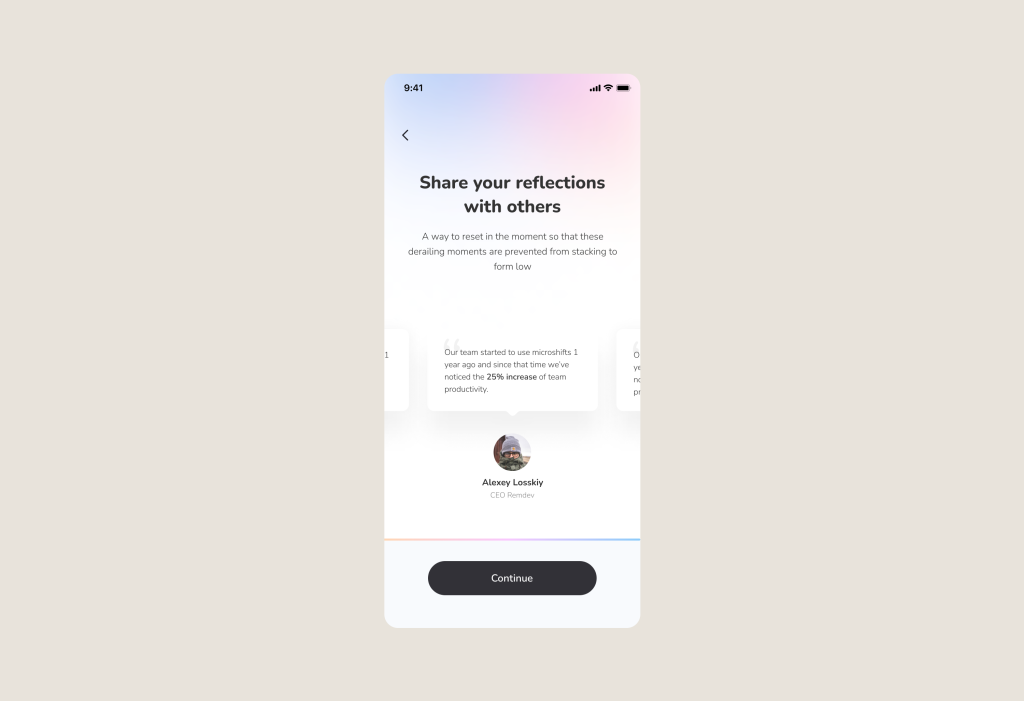
And of course ask users for feedback on why they missed their streak and provide suggestions or modifications based on their responses.

We hope this article was useful for you!
Who we are? We are a digital health product studio, who transforms healthcare digital experiences and sets new standards for delivering digital healthcare in a way that positively impacts people’s lives.
We assist healthcare startups in designing and developing digital products, while also helping healthcare organizations undergo transformative changes.
If you are interested about our experience check our portfolio with case studies by the link or you can read more about us here.
And write to us now on m@nozomihealth.com and we will discuss how we can help ensure that your product brings real benefits



